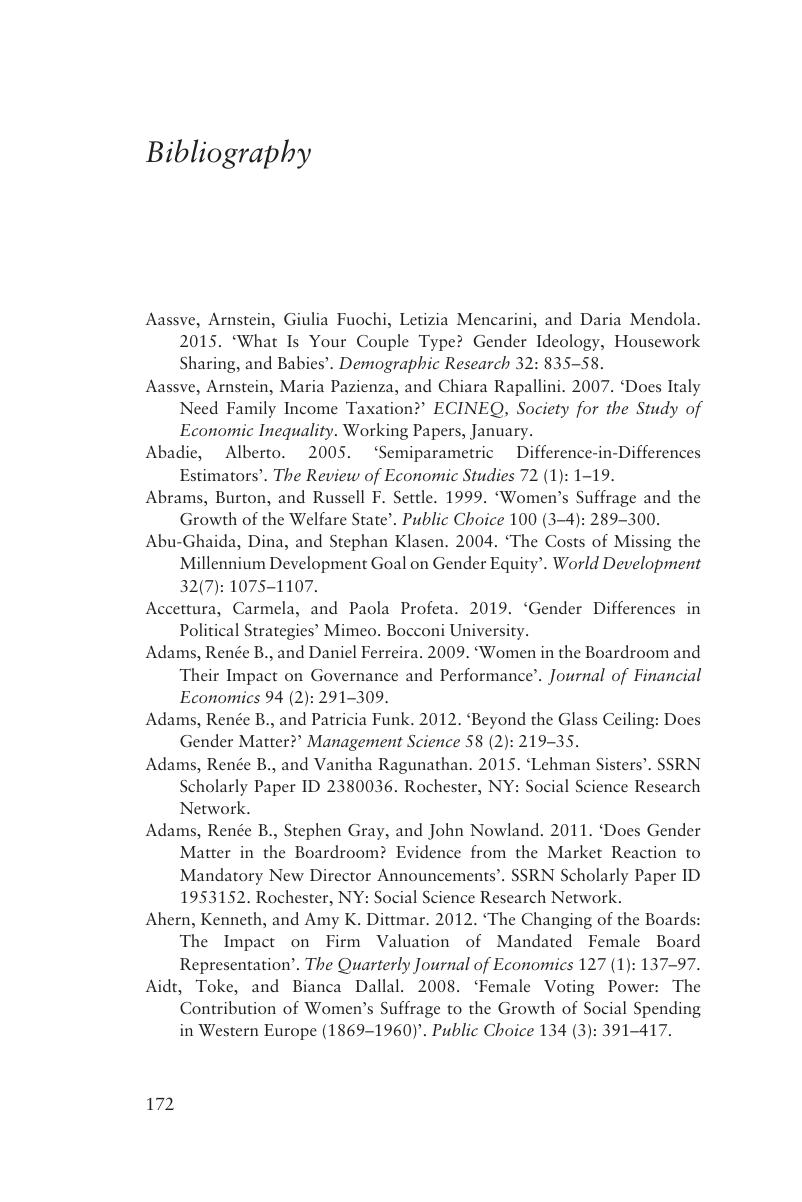Book contents
- Gender Equality and Public Policy
- Gender Equality and Public Policy
- Copyright page
- Contents
- Figures
- Tables
- Preface
- Acknowledgements
- 1 Introduction
- 2 The Scenario
- 3 From Public Policy to Gender Equality
- 4 How Women Affect Public Policy
- 5 How Women Affect Firms’ Outcomes
- 6 Global Challenges, Gender and Public Policy
- 7 Conclusions
- Appendix Useful Methods to Identify the Relationship between Gender and Public Policy
- Bibliography
- Index
- References
Bibliography
Published online by Cambridge University Press: 06 April 2020
- Gender Equality and Public Policy
- Gender Equality and Public Policy
- Copyright page
- Contents
- Figures
- Tables
- Preface
- Acknowledgements
- 1 Introduction
- 2 The Scenario
- 3 From Public Policy to Gender Equality
- 4 How Women Affect Public Policy
- 5 How Women Affect Firms’ Outcomes
- 6 Global Challenges, Gender and Public Policy
- 7 Conclusions
- Appendix Useful Methods to Identify the Relationship between Gender and Public Policy
- Bibliography
- Index
- References
Summary

- Type
- Chapter
- Information
- Gender Equality and Public PolicyMeasuring Progress in Europe, pp. 172 - 203Publisher: Cambridge University PressPrint publication year: 2020

